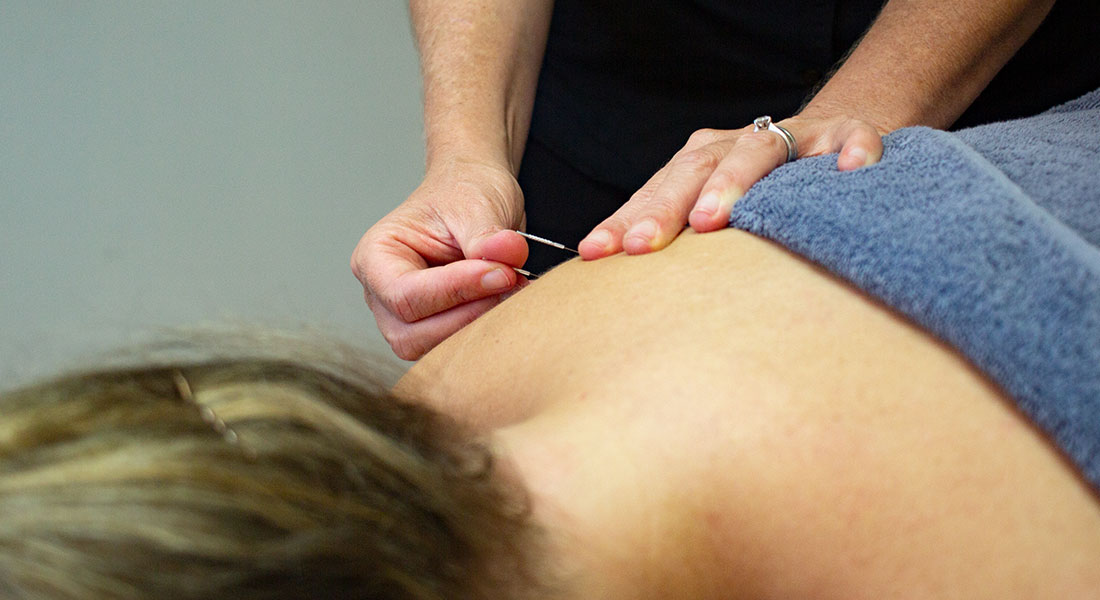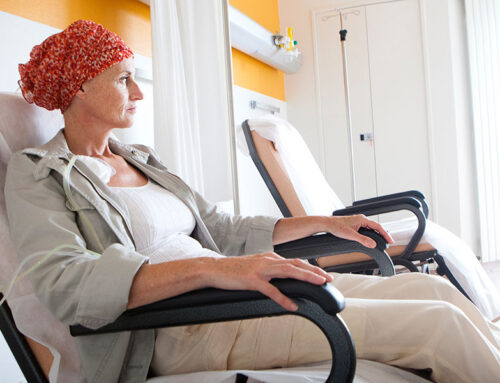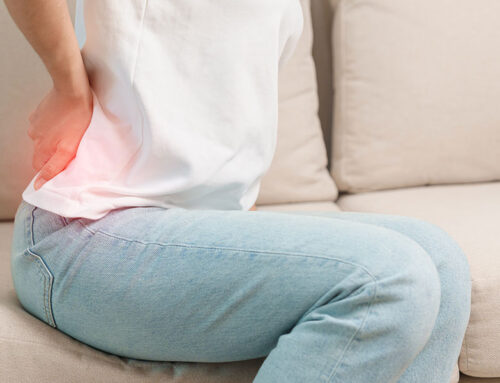Myofascial dry needling (MDN) is a treatment modality that is used by Myotherapists to treat musculoskeletal dysfunction and pain (Atkinson, P & Sager, E 2010). Dry needling is also used by other health care practitioners such as Physiotherapists and Osteopaths.
Myofascial dry needling incorporates the use of single, sterile solid needles with the specific purpose of treating dysfunction within the myofascial system of the human body. Myofascial dry needling is used to eliminate myofascial trigger points associated with dysfunction and pain syndromes (Finando, D & Finando, S 2005).
A myofascial trigger point is a hyperirritable “knot” within a tight band of muscle tissue that when compressed causes pain and can also cause pain referral, tenderness and other symptoms (Travell & Simons 1999).
Many patients confuse Myofascial Dry Needling with Acupuncture. Acupuncture is one of the modalities of Traditional Chinese Medicine (TCM). TCM deals with acupuncture points that lie on meridians or energy lines. Acupuncturists insert needles into acupoints on specific anatomical locations of the body and treat a range of various pathological conditions (Finando, D & Finando, S 2005). As Myotherapists, according to Atkinson & Sager (2010) our treatment aim is ‘to recognise, treat and resolve myofascial trigger points associated with myofascial pain syndromes’. We as Myotherapists do not claim to know how to practice acupuncture.
Myofascial dry needling when performed correctly is a safe and effective treatment modality that can have very positive results dealing with chronic pain and myofascial dysfunction (Simons, D 2002). Patients may report feeling the prick of the needle when inserted but most symptoms vary depending on the individual’s experience. Some symptoms may include a dull ache at the site of the needle, a strong ache down the referral pain pathway, pins and needles, heat or no feeling at all. Myofascial trigger points can occur in any muscle throughout the body depending (Finando, D & Finando, S 2005). Acupuncturists may use multiple needles to obtain the result they want however MDN typically only uses one needle per myofascial trigger point promoting a twitch response.
Some possible side effects of MDN can include the following;
- Post treatment soreness
- General feeling of being tired or fatigued
- Increased pain and/or stiffness
Recommendations post treatment varies depending on the individual’s response to Myofascial Dry Needling. Your Myotherapist may suggest applying heat or ice to the area, gentle stretches and changes in activities for 24 hours post treatment.
There are some conditions and medications that are contraindicated with Myofascial Dry Needling. Some of these include (Atkinson, P & Sager, E 2010);
- Pregnancy
- Epilepsy
- Cancer
- Bleeding Disorders
- Aneurism
- Anticoagulant medications (blood thinners)
- Communication impairment
- Sensory impairment
If you are unsure whether Myofascial Dry Needling is worth while or could potentially help your condition/s, discuss it with your Myotherapist informing them of any medications you are currently taking or conditions that either you or your family have a history of.
By Caitlin Smith – Elite Myotherapist
References
Course notes, Myofascial Dry Needling, Advance Diploma of Remedial Massage (Myotherapy), RMIT University, City Campus, Melbourne, Australia, Semester 1 2010, compiled by Priya Atkinson & Elizabeth Sager
Finando, D & Finando, S, 2005, Trigger Point Therapy for Myofascial Pain, Healing Arts Press, Vermont, USA
Simons, D, 2002, ‘Understanding effective treatment of myofascial trigger points’, Journal of Bodywork and Movement Therapy, vol. 6, issue 2, pp. 81- 8
SportsCare Physical Therapy, 2010
Travell, J & Simons, D, 1999, Myofascial Pain and Dysfunction: The Trigger Point Manual, 2nd ed. Volume 1, Williams & Wilkins USA






